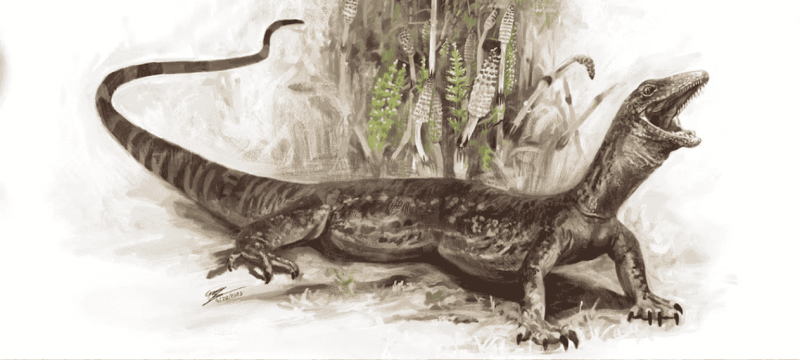Scientists have discovered the fossil of an Enigmatic Jurassic reptile in Scotland, leaving researchers debating whether it was an early ancestor of snakes or a unique evolutionary offshoot. The creature, named Breugnathair elgolensis, lived around 167 million years ago and combined traits of both snakes and lizards.
The Enigmatic Jurassic reptile had curved, hook-like teeth similar to snakes, with jaws designed for gripping prey. However, its body shape and limbs were distinctly lizard-like. Measuring about 30 centimeters in length, it likely thrived in a warm, swampy environment resembling a tropical mangrove. Scientists believe it fed on insects, amphibians, and small reptiles.
This discovery marks one of the oldest nearly complete fossils from the group of reptiles known as squamates, which includes snakes and lizards. Researchers described Breugnathair as a “mosaic species” — a mix of features from both reptiles. Some even nicknamed it a “snizard” or “liznake” due to its blended anatomy.
According to paleontologist Roger Benson from the American Museum of Natural History, the fossil’s traits make it difficult to determine its exact lineage. He explained that the Enigmatic Jurassic reptile could either be a lizard-like ancestor of snakes or a separate species that evolved snake-like traits independently.
The fossil was found on Scotland’s Isle of Skye near the town of Elgol. Its name translates to “false snake of Elgol,” highlighting its puzzling appearance. If not a direct snake ancestor, scientists suggest it may represent an extinct branch of early reptiles that separately developed similar hunting adaptations.
Experts say the find sheds new light on reptile evolution and could help identify key traits linking lizards and snakes. As Benson noted, “Breugnathair raises more questions than it answers, but it may guide future research into how snakes first evolved.”
In other news read more about: Scientists Discover Enigmatic Object at the Outer Edge of the Solar System







